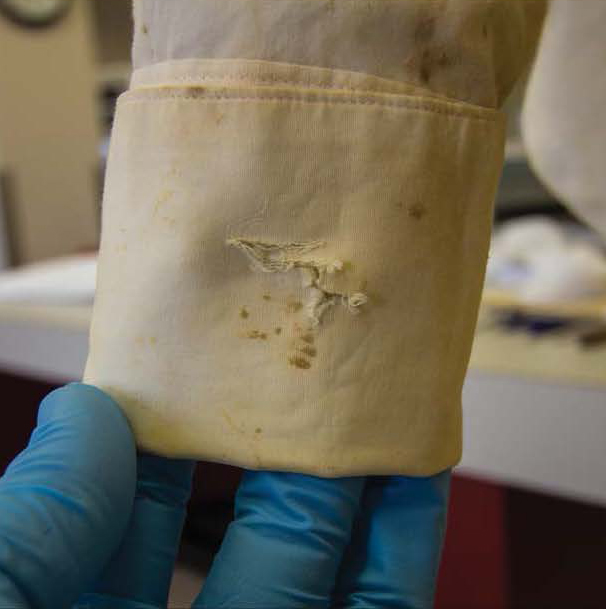Opacity of bone is a matter of bone density and thickness. Ribs are not really thick so they don't absorb xrays well when perpendicular to the xrays. When at an angle to the xrays they present more bone to the xray path so they block more, which is why the ribs at the sides are more opaque than the central parts. So although the opacity of the ribs is weakest where the lungs are fulllest, it is not because of air. Air doesn't affect the bone's opacity.
Since air in the lungs appear as black on an X-ray, it compromises the brightness of bone between the lungs and the X-ray machine lens.
The bullet destroyed 10 cm of rib. According to you it was still travelling at 1700 fps when it struck the 5th rib. According to you it did not strike nose-first. According to Larry Sturdivan the jacketed 6.5 mm bullet will deform if it strikes bone at a much lesser speed nose-first and even lesser still if not nose first.
Sturdivan is all over the map. The SBT rib strike would be oblique to the bone (ie: more of the bone's mass was in the missile path) whereas your theory would have the bullet strike the rib bone perpendicular (ie: very little bone in the missile path).
So, better to believe your cockamamie theory that a bullet (unimpeded and nose-on) made a right-angle turn (3D will show this, plus it would have to traverse the shoulder cuff to reach the fifth rib at all) off the thin weak fifth rib bone.
Your graphic:

And that is just striking the rib. Then there is the radius, which is a very hard bone. Do the irregular holes in the shirt cuff really look like they were made by CE399?:

You expecting a punched-out clean silhouette of the bullet shape? Unlike the back, the wrist is going to move quite a bit when struck and the bullet would deflect. Not a simple matter of a bullet going through a stiff supported surface and leaving clean holes.